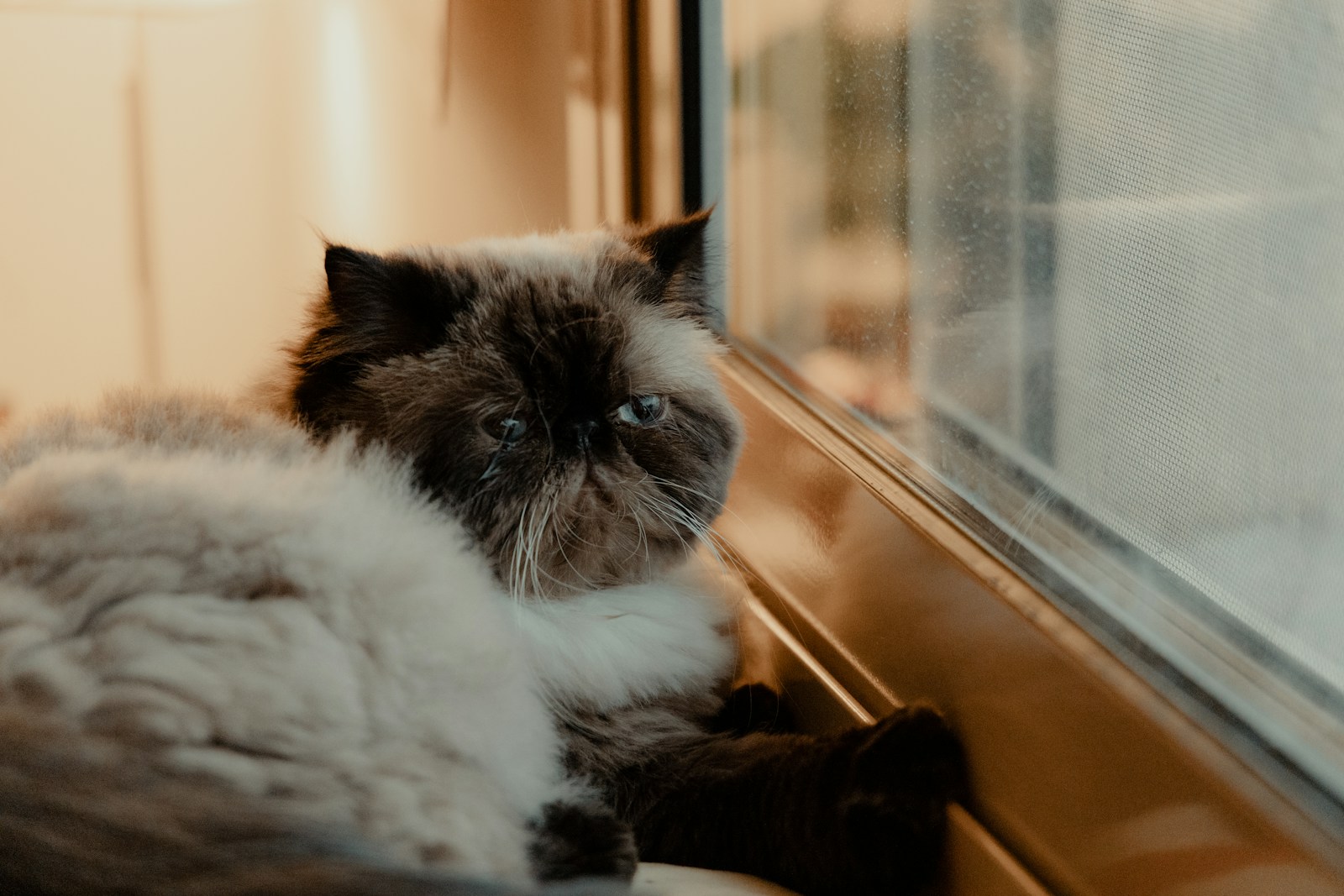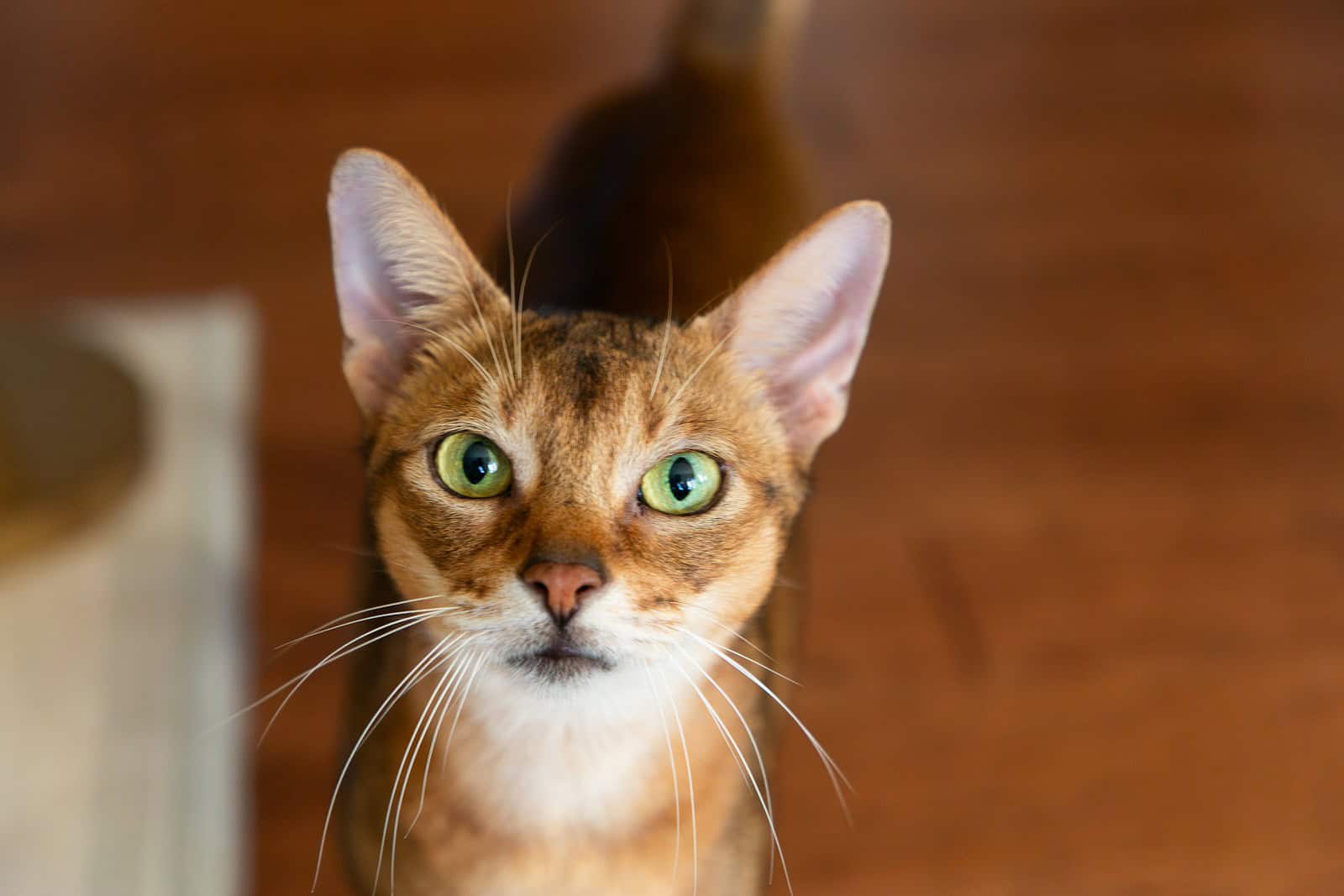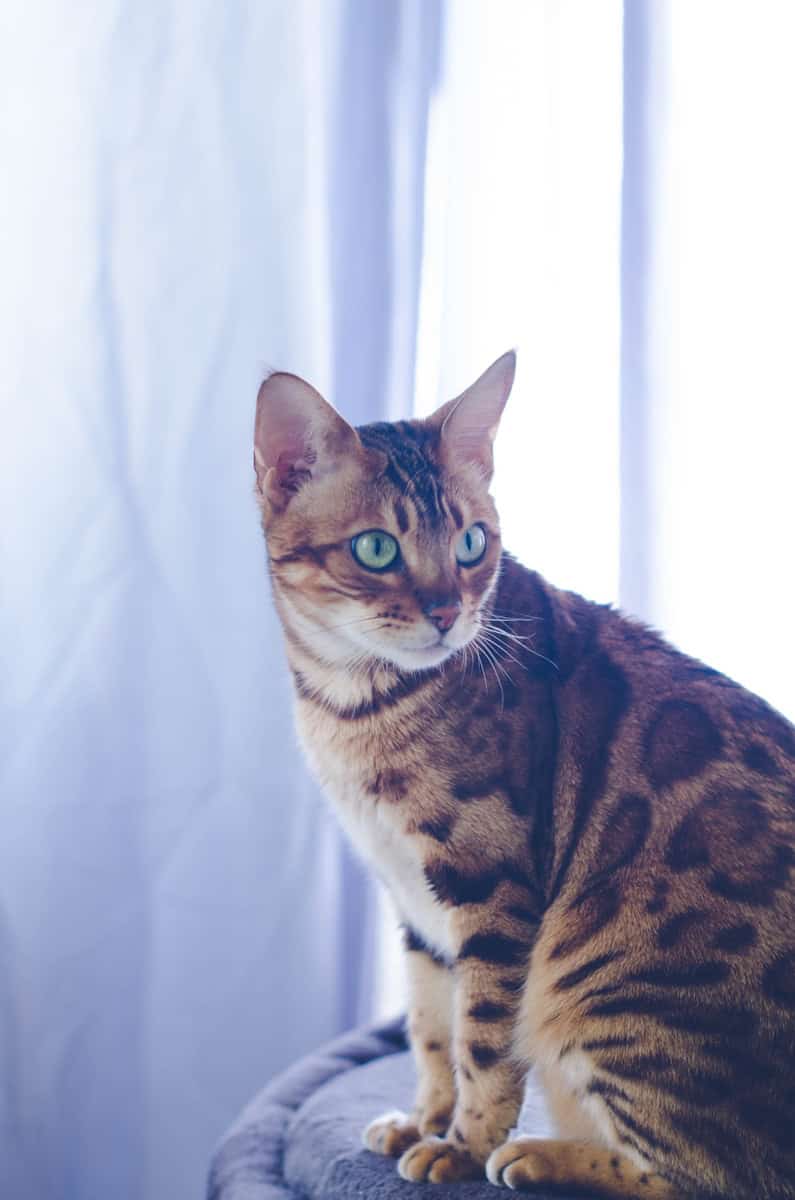Features
Hair loss

Child-friendliness

Speech

Hugging

Health

Activity

Are you a cat lover looking for a new fascinating breed to explore? The Himalayan cat is a beautiful and intriguing breed that is sure to pique your interest. With its majestic appearance and captivating personality, this feline with its unique traits and characteristics is a real pleasure to get to know. Whether you are already a proud owner of a Himalayan cat or just curious about this enchanting breed, our ultimate guide will provide you with all the information you need to better understand these mysterious and charming creatures.
History of the Himalayan cat
The origin of the Himalayan cat goes back to the mid-20th century, when American and British breeders began crossing Persian cats with Siamese. The goal was to combine the luxurious, long coat and round face of the Persian cat with the contrasting colors and expressive blue eyes of the Siamese. The result was a stunning kitten with “pointed” color patterns on ears, face, paws and tail, and a thick, fluffy coat in lighter shades on the body. Early breeding programs in the United States of America (particularly in Minnesota and New York) laid the foundation for what would later become the modern Himalayan breed standard.
In Britain, this breed was initially named “Colourpoint Persians” and was officially recognized by the Governing Council of the Cat Fancy (GCCF) in 1955. Later, to avoid confusion with traditional Persian cats and Siamese cats, in the United States they chose the name “Himalayan” a reference to the subtle resemblance of the color veil to that of Himalayan rabbits. Through consistent selective breeding and breed clubs worldwide, the Himalayan cat became increasingly popular. Today, major international organizations such as The International Cat Association (TICA) and the Fédération Internationale Féline (FIFe) recognize the Himalayan cat as an official breed, establishing breeding goals and quality requirements uniformly.
Physical characteristics of the Himalayan cat
The Himalayan cat immediately stands out for its elegant, symmetrical silhouette and lush coat. The body tones range from cream to snow white, while the “points” the ears, paws, tail and face mask are darker shades, such as seal, blue, chocolate or lilac. These sharp color contrasts, combined with the satiny, medium-length coat, give the Himalayan cat a regal appearance. The head is broad and round, with full cheeks and a short nose that is subtly upturned, giving the face a soft, plump appearance.
The eyes of the Himalayan cat are large, round and brilliant blue. They are set wide apart and exude a friendly, calm expression. The ears are small, rounded and well placed on the sides of the head, forming an almost perfect circle with the crown. The legs are short and sturdy, with large, rounded pads covered with tufts between the toes. The tail is medium-length, full of hair and forms a beautiful fluff, which can lie curled gracefully around the body when at rest. Adult Himalayan cats typically weigh between 3.5 and 6 kilograms, with a compact but not heavy build.
Personality and temperament
The Himalayan cat is known for its gentle and calmed nature. These cats tend to be friendly, patient and form strong emotional bonds with their owners. Despite their luxurious appearance, they are subdued creatures that do not easily become intrusive, but do enjoy being around people and receiving visitors with quiet curiosity. They have a subdued playfulness: short, contented laps with a cat toy or ball, followed by long naps in their favorite sunbeam.
A Himalayan cat thrives best in a safe, quiet environment where they receive the attention and affection they deserve. They do not need a lot of noise or fuss to feel challenged, but appreciate regular play and mental stimulation. They respond well to gentle, loving handling and, with proper socialization, also get along well with children and other pets. In short, the Himalayan cat is an ideal companion for those looking for a loyal, calm and companionable cat.
Interaction with people and other pets
Himalayan cats are true companion animals and enjoy human contact. They often show affection by lying by their owner, purring softly and giving heads. Despite their graceful appearance, they are not snobby: a Himalayan cat exudes warmth and accessibility. They get along well with children, provided the little ones learn to treat the cat gently and respectfully.
As for other pets, the Himalayan cat generally behaves peacefully. Because of their moderate energy and calm demeanor, they can live harmoniously with other cats and even quiet-minded dogs. Do introduce new animals gradually, with plenty of their own territory and safe hiding places, so that each cat or dog can get used at its own pace. With patience and proper planning, the Himalayan cat will soon become a valued family member within a multi-animal household.
Care tips for the Himalayan cat
The lush medium-length coat of the Himalayan cat requires regular attention to keep away tangles and dirt. Daily brushing with a soft brush or comb helps remove dead hairs and stimulates blood flow to the skin. Pay extra care to the folds around the face to prevent accumulation of dirt. A weekly bath with a mild cat shampoo can help keep the coat fresh and shiny, but don’t overdo it to balance the natural oils.
In addition to coat care, it is important to keep your Himalayan cat’s eyes and ears clean. Due to their slight eye wear, tears may increase slightly; wipe gently with a damp, soft gauze. Check the ears weekly for dirt or unwanted odor and clean them with a cat-friendly ear cleaner. Also remember to trim the nails every few weeks and brush the teeth daily or several times a week to prevent tartar and dental problems. Finally, provide plenty of scratching posts and toys: this will keep your Himalayan cat healthy both physically and mentally.
Health problems and prevention
Although the Himalayan cat is generally a healthy breed, there are some hereditary conditions to be alert to. Polycystic kidney disease (PKD) is relatively common in Persian descendants, including the Himalayan cat. By having breeding stock tested and using only negative specimens for breeding, you can significantly reduce the risk of PKD in kittens.
In addition, flat facial features can lead to respiratory problems and dental abnormalities. Regular veterinary checkups help detect complications early. Also watch for progressive retinal atrophy (PRA), an eye condition that can lead to blindness. Prevention includes responsible breeding, genetic testing and a proactive approach to nutrition and exercise: a balanced diet and adequate exercise contribute to the overall health and longevity of your Himalayan cat.
Conclusion
The Himalayan cat is an elegant and loving breed that is a perfect fit for people looking for a quiet, affectionate companion. With their lush coat, expressive blue eyes and gentle nature, they are a true asset to any household. With attention to coat care, health testing and a loving environment, you can enjoy the charm and companionship of this special cat for years to come.
Whether you are an experienced cat owner or adopting a purebred cat for the first time, the Himalayan cat will reward you with unforgettable moments filled with cuddles, gentle purrs and a warm presence in your home.



